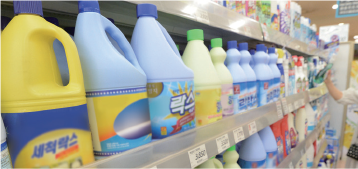
KEITI runs a relief system for those suffering damage from humidifier disinfectants, asbestos and environmental pollution.
Humidifier Disinfectant Damage Relief Program
- Operate a relief system to help those who lost their lives as well as the bereaved family members or those who have suffered health issues due to the use of humidifier disinfects containing chemicals declared toxic
System(Korea ver.)
Environmental Pollution Damage Relief Program
- Contribute to providing the victims of environmental damage with prompt and unbiased relief by establishing an effective system of relief from damage
System(Korea ver.)
Asbestos Damage Relief
- To provide prompt relief to the sufferers of asbestos-related diseases or their bereaved, in view of special characteristics of asbestos health damage by taking measures for paying them medical expense, etc (Under the Asbestos Injury Relief Act(AIRA) from 2011)
- Asbestos-related Diseases : Malignant Mesothelioma, Lung cancer(accompanied by asbestosis or pleural diseases), Asbestosis, Diffuse Pleural Thickening
Relief system for victims of asbestos.mp4
System(Korea ver.)

KEITI supports improvement of environmental health and welfare for socially-vulnerable people.
Guide and Inspection of children activity zone
- Compliance with the environmental safety control standards “Guide and Inspection “ Article 29, Clause 1-1 of the ENVIRONMENTAL HEATH ACT
- for the purpose of monitoring the observance of restrictions on the use of environmentally hazardous factors for children's activity zones
- Administrative order(improvement) in case of non-compliance with inspection results
- report the status of improvement orders and implementation to the ministry of environment
Korean Children’s Environmental Health Study(Ko-CHENS)
- A 22-year long-term follow-up study from 2015 to 2036 to examine the impact of harmful environmental pollutants on fetus and the growth of children after birth
- 70,000 pregnant women* recruited between 2015 and 2020 births
(* Main Cohort: 65,000 pregnant women, Core Cohort: 5,000 pregnant women)
Environmental Disease Prevention for the Vulnerable Groups
- Analyze and offer Consulting & improvement services on indoor environmental risk factors to the vulnerable classes
- Select vulnerable households, analyze a total of 7 indoor environmental risk factors*
- * Fine dust (PM-10, PM-2.5), fungi, CO2, TVOC, HCHO, dust mites, etc.
- Explain how to reduce and control each indoor environmental risk factor, draft an analysis report and explain the report in detail, after which the ways to control these risk factors are to be explained again
- Support renovation to improve indoor environment for households that require immediate improvement in indoor environment
- After completing indoor environment analysis and consulting, select a few households that require assistance/improvement and renovate the houses
- Support treatment of patients suffering from environmental diseases
- Work together with medical centers to offer free treatment and examination to children, youth and seniors suffering from environmental diseases





